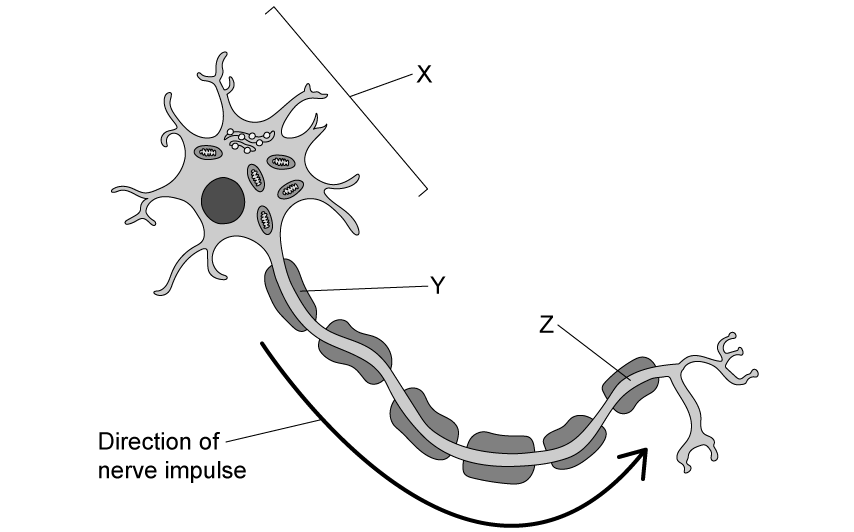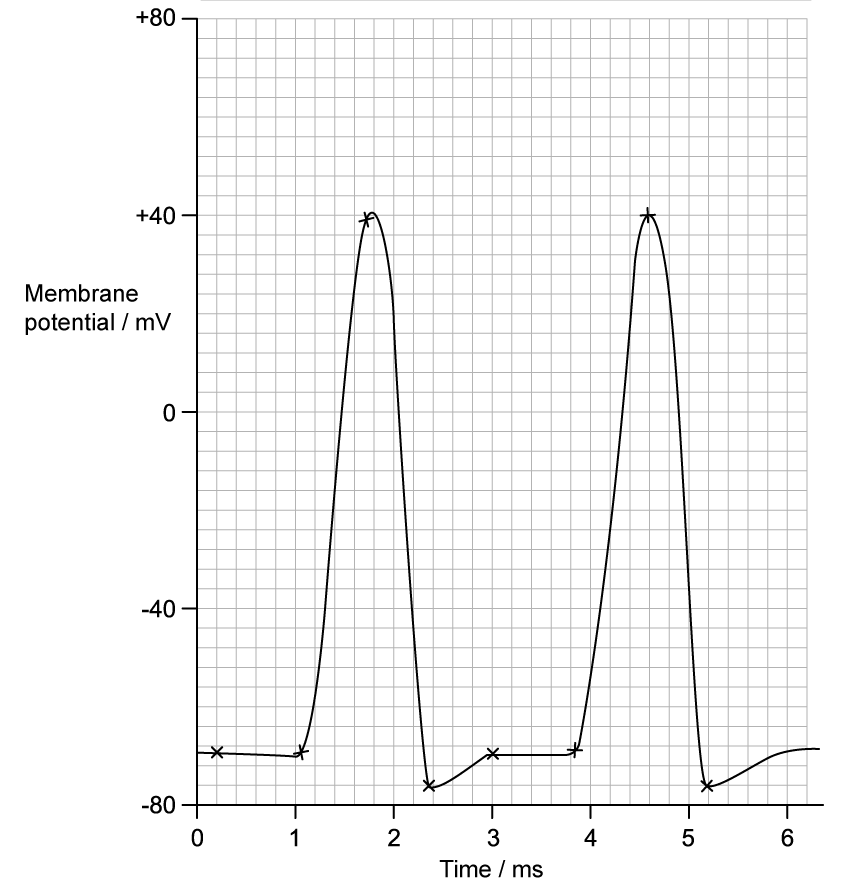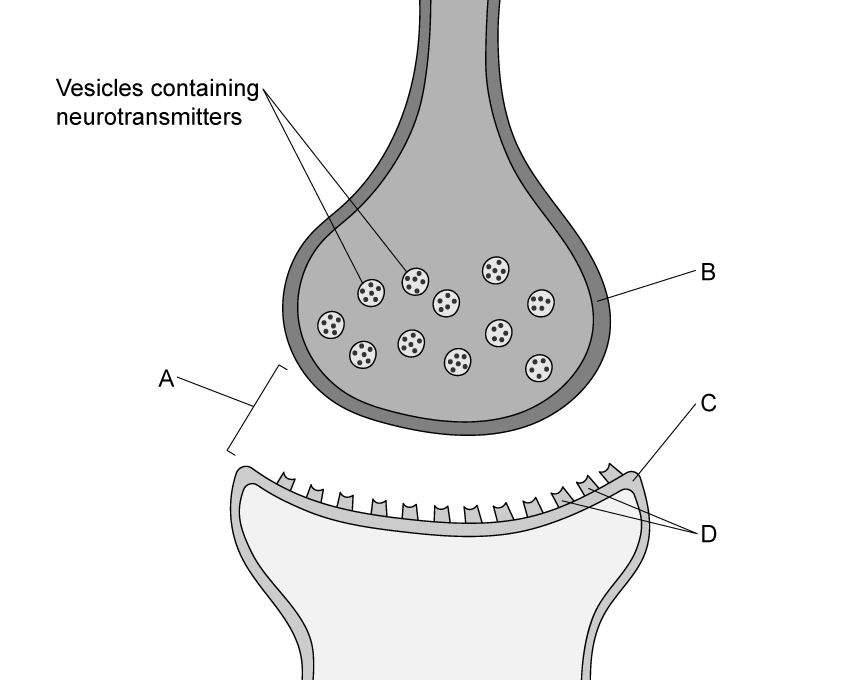a)
The image shows a representation of a neurone.
Identify structures X-Z in the image.
[3 marks]
Assess your score
View Answer
b)
Branching from structure X of the neurone in part a) are structures known as dendrites.
State the role of dendrites in the nervous system.
[1 mark]
Assess your score
View Answer
c)
Describe the structure of Y from the image in part a).
[2 marks]
Assess your score
View Answer
d)
It has been estimated that a neurone without structure Y present can conduct nerve impulses at speeds of 0.5 m s-1 whereas a neurone with structure Y present can conduct impulses at speeds of 150 m s-1 .
Calculate how many times faster impulse conduction is in the presence of structure Y than without structure Y .
[2 marks]
Assess your score
View Answer
Next Question
a)
The graph below shows changing membrane potential in an axon within a human leg.
At 0.5 ms:
i)
Identify the type of membrane potential present in the axon.
[1 mark]
ii)
Explain how this membrane potential has been achieved.
[2 marks]
Assess your score
View Answer
b)
At 1 ms in the graph in part a) the membrane is stimulated.
State what happens within the membrane at 1 ms as a result of this stimulation.
[1 mark]
Assess your score
View Answer
c)
Explain the shape of the curve between 1 - 1.8 ms in the graph in part a).
[3 marks]
Assess your score
View Answer
d)
Assuming the intensity of stimulation remains constant, calculate how many complete action potentials will occur in 1 second in the graph shown in part a). Note that there are 1000 ms in a second.
[2 marks]
Assess your score
View Answer
Previous Question Next Question
a)
The graph below shows the changes in membrane potential that take place in a neurone during a single action potential.
Stages 1 and 5 can be identified as the neurone in its resting state, and during stage 4 the neurone is said to be hyperpolarised.
Identify stages 2 and 3 in the graph.
[2 marks]
Assess your score
View Answer
b)
Explain the change in membrane potential taking place during stage 3 in the graph in part a).
[2 marks]
Assess your score
View Answer
c)
The table below contains a series of statements that describe the propagation of a nerve impulse a long an axon.
Sodium ions diffuse along the inside of the axon from an area of high concentration to an area of low concentration
A new action potential is generated in the neighbouring section of the axon
The recent influx of sodium ions creates a sodium gradient between the stimulated part of the axon and the neighbouring section.
If a depolarisation threshold is reached new sodium ion channels open
Identify the correct sequence of events by writing the numbers 1-4 in the blank boxes. The first event should be number 1 , and so on.
[3 marks]
Assess your score
View Answer
d)
State the role of the refractory period in the propagation of action potentials.
[1 mark]
Assess your score
View Answer
Previous Question Next Question
a)
The image below shows a representation of a junction between two neurones.
Identify structures A-C .
[3 marks]
Assess your score
View Answer
b)
Part a) shows that the junctions between neurones contain molecules known as neurotransmitters.
Outline how neurotransmitters interact with the structures labelled D to bring about an action potential in the new neurone.
[2 marks]
Assess your score
View Answer
c)
Once its role is complete the neurotransmitter needs to be broken down and recycled in order for the junction between neurones to continue functioning.
Identify an enzyme that is involved with the breakdown of neurotransmitter molecules.
[1 mark]
Assess your score
View Answer
d)
Neonicotinoids are chemicals used in some types of pesticide. Neonicotinoids have a similar function to certain neurotransmitters in the nervous systems of insects, with one major difference being that the enzyme in part c) cannot break them down.
Suggest why the enzyme in part c) cannot break down neonicotinoids.
[1 mark]
Assess your score
View Answer
Previous Question Next Question
One mark is available for clarity of communication throughout this question.
a)
Outline the role of the myelin sheath in nerve transmission.
[3 marks]
Assess your score
View Answer
b)
Draw a labelled diagram of a neurone.
[5 marks]
Assess your score
View Answer
Previous Question



